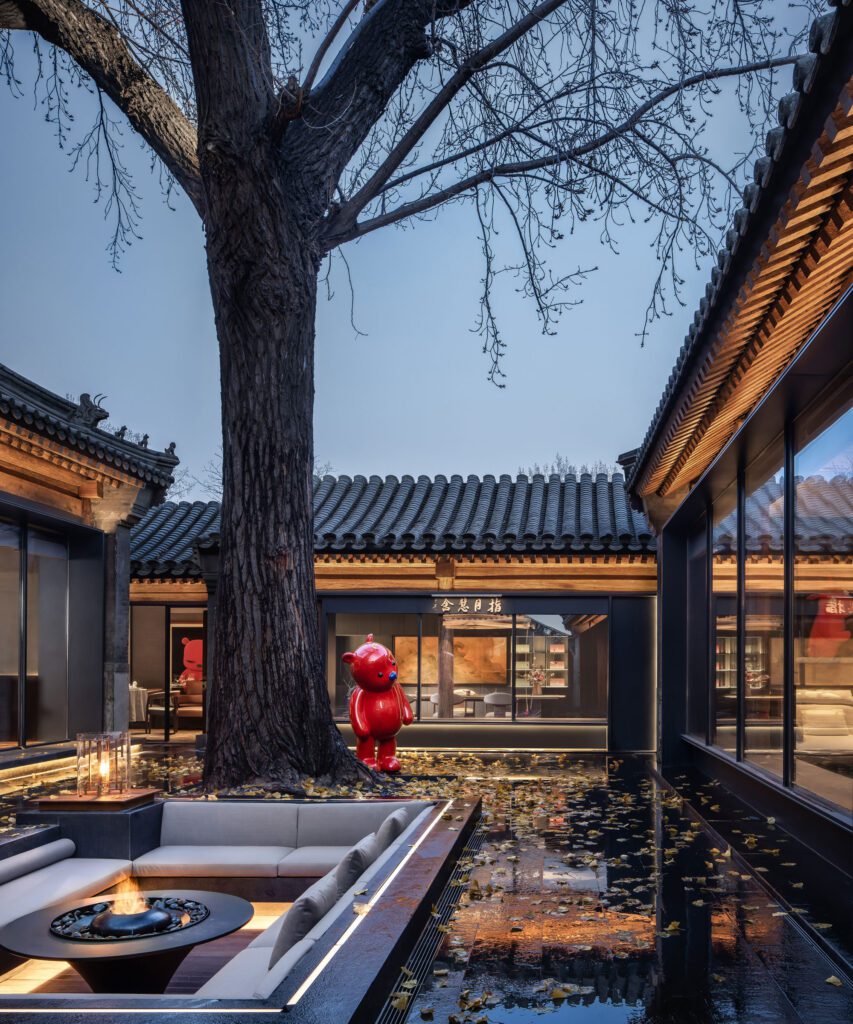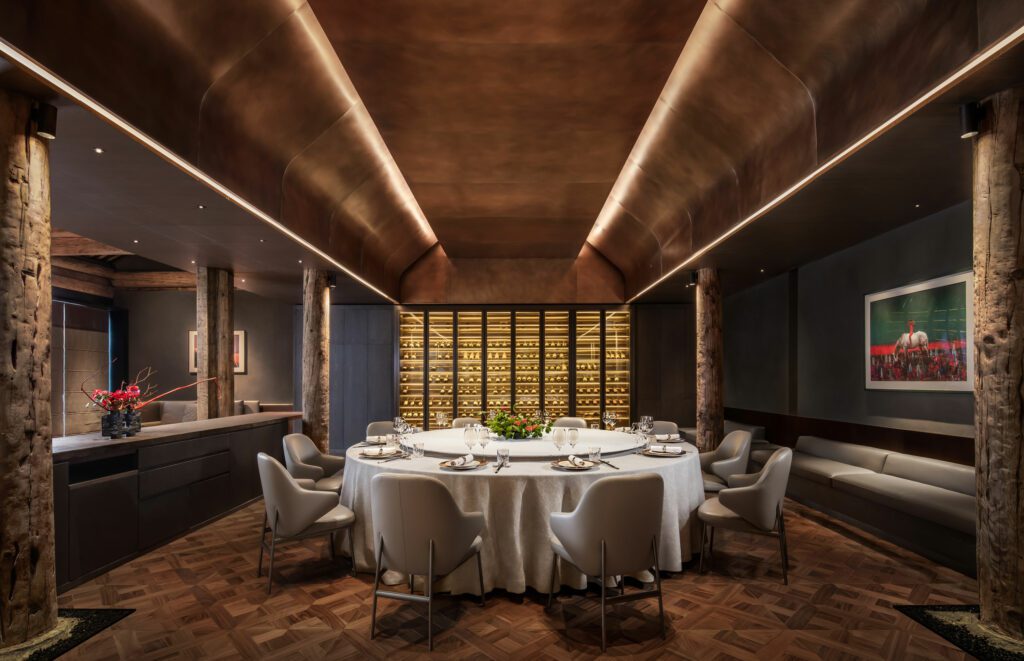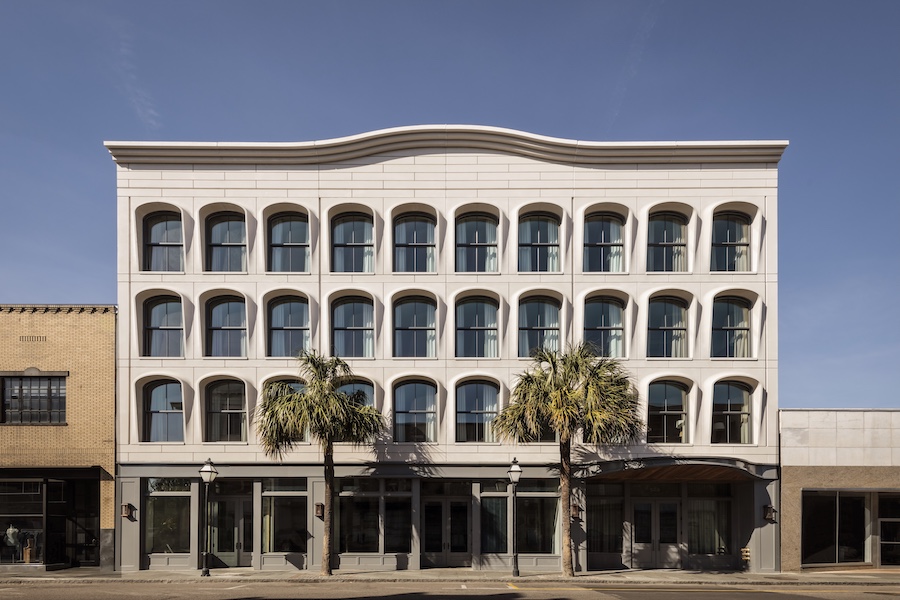La Maison Xun Takes Cues From Its Designer’s Childhood
La Maison Xun features comfortable modern art and antique architectural patterns

Situated within a quadrangle courtyard in Beilucaoyuan Hutong in Beijing, Chinese-style restaurant La Maison Xun features comfortable modern art and antique architectural patterns—a rarity in the modern high-end restaurant. Designed by Liu Daohua, founder of LDH Architectural Design, focus was placed on maintaining the history of the structure, the surrounding natural landscape, and the tranquility of old Beijing residences.
“My inspiration for this project originates in my childhood memories,” says Daohua. “I hoped to integrate the memory of the past and the feelings one holds for his or her old home into my design. To this end, I didn’t particularly emphasize the design itself, but respected the feeling left of the original building and created the atmosphere of the old yard in memory. I wanted to combine comfortable experiences with feelings by using modern materials.”

To enter La Maison Xun, guests pass through a red gate into the quadrangle courtyard, where traditional Chinese art elements such as gray tiles, wooden eaves, black walls, and ancient trees stand.
“This restaurant is not just a top-level or high-end club, but also a landscape that can restore the nostalgic mood of Beijing,” says Daohua.
By prominently utilizing metal and glass for structural components, rather than traditional wood and stone, there is an intimate connection between the courtyard, trees, and natural sunlight. While original wood was maintained as much as possible, the introduction of metal and glass bridges the gap between present and past.

“We applied old materials from the original building into the new design to show the historical traces of the space while integrating them into the modern environment,” says Daohua. “In the whole space, we did not change much in the form or physical relations, but it was important that we constructed a relationship between traditional design and nature.”
While guests enjoy meals surrounded by traditional and contemporary elements, another noteworthy part of the La Maison Xun’s design is the artwork and furniture chosen for the spaces.

“The restaurant owners Wang Xiaofei and Wang Zhenyu, and myself hoped to combine China’s excellent original furniture and works of art in the structure,” says Daohua. “To this end, the space features furniture from Chen Darui’s brand Maxmarko, original furniture designed for the space, as well as artist Zhang Zhan’s [bright red] Pupu Bear, making the space more diversified and providing more possibilities for the future.”
Projects:
La Maison Xun Takes Cues From Its Designer’s Childhood
La Maison Xun features comfortable modern art and antique architectural patterns
Situated within a quadrangle courtyard in Beilucaoyuan Hutong in Beijing, Chinese-style restaurant La Maison Xun features comfortable modern art and antique architectural patterns—a rarity in the modern high-end restaurant. Designed by Liu Daohua, founder of LDH Architectural Design, focus was placed on maintaining the history of the structure, the surrounding natural landscape, and the tranquility of old Beijing residences.
“My inspiration for this project originates in my childhood memories,” says Daohua. “I hoped to integrate the memory of the past and the feelings one holds for his or her old home into my design. To this end, I didn’t particularly emphasize the design itself, but respected the feeling left of the original building and created the atmosphere of the old yard in memory. I wanted to combine comfortable experiences with feelings by using modern materials.”

To enter La Maison Xun, guests pass through a red gate into the quadrangle courtyard, where traditional Chinese art elements such as gray tiles, wooden eaves, black walls, and ancient trees stand.
“This restaurant is not just a top-level or high-end club, but also a landscape that can restore the nostalgic mood of Beijing,” says Daohua.
By prominently utilizing metal and glass for structural components, rather than traditional wood and stone, there is an intimate connection between the courtyard, trees, and natural sunlight. While original wood was maintained as much as possible, the introduction of metal and glass bridges the gap between present and past.

“We applied old materials from the original building into the new design to show the historical traces of the space while integrating them into the modern environment,” says Daohua. “In the whole space, we did not change much in the form or physical relations, but it was important that we constructed a relationship between traditional design and nature.”
While guests enjoy meals surrounded by traditional and contemporary elements, another noteworthy part of the La Maison Xun’s design is the artwork and furniture chosen for the spaces.

“The restaurant owners Wang Xiaofei and Wang Zhenyu, and myself hoped to combine China’s excellent original furniture and works of art in the structure,” says Daohua. “To this end, the space features furniture from Chen Darui’s brand Maxmarko, original furniture designed for the space, as well as artist Zhang Zhan’s [bright red] Pupu Bear, making the space more diversified and providing more possibilities for the future.”


